Medical Science and Photography at the Time of the Plague in Manchuria 1910-1911
L’incendie épidémique1This expression figures in a text by Dominique Chevé and Michel Signoli, “Corps dans la tourmente épidémique”, in Corps, 2007/1 (No. 2). It is also an acknowledgement of L’incendie millénariste, published in 1987 by Os Cangaceiros.
… even as, according to common wont,
smoke is changed into flame with marvellous quickness.
(Saint Augustine, De fide et symbolo, 10.24)
The Corona virus spread quickly at the beginning of 2020. On 11 March, the World Health Organization declared COVID-19 a pandemic. But the world has witnessed pandemics before, such as the Spanish flu in 1918-1919. Far less known today is the epidemic that spread across Manchuria in 1910-1911. It is documented in a rare album of 50 original mounted photographs, taken by an unknown photographer, gelatin silver prints from glass negatives, 140 x 197 mm, and 2 original unmounted photographs. Revealing, often harrowing, this is the only known collection of its kind to be held in private hands.
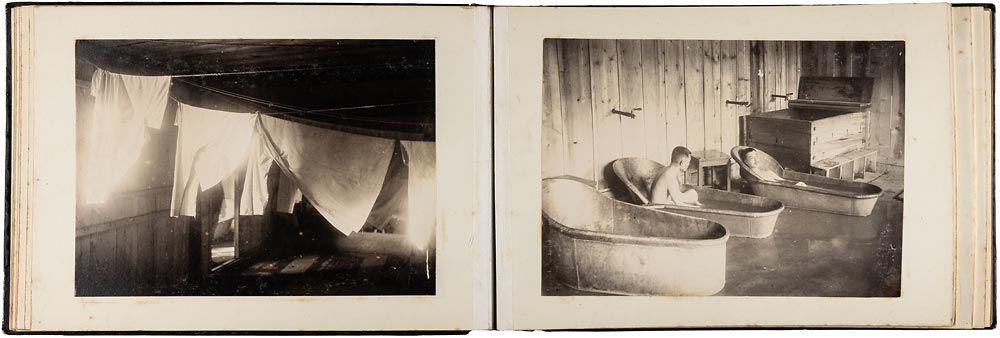
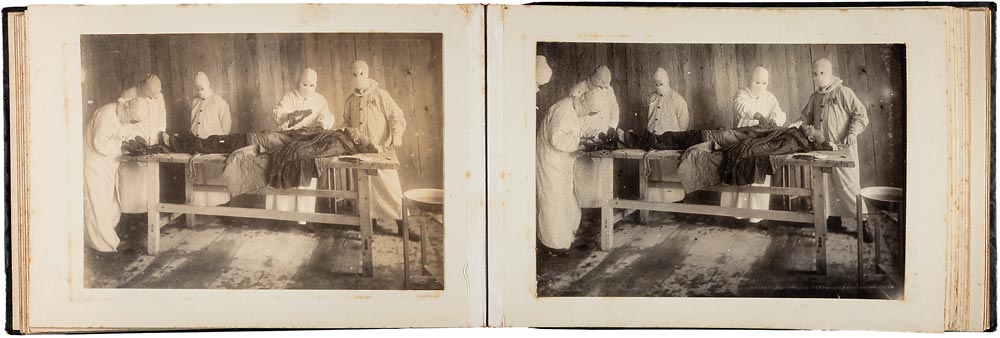
The plague spread across a region where there was a persistent risk of war involving three imperialist powers that were themselves confronted by a threat of political destabilisation and regime change. The autocratic Russian empire found it difficult to resist the social protests and calls for liberty that agitated the people. In 1911, the Qing dynasty, split by internal conflicts, gave way to the Republic of China. And in Japan, the Meiji era was in decline. The country was now a colonial power, with militarism dominating its territorial expansion.
Amid the extreme geopolitical confusion and colonial expansionism, where confrontation took precedence over strategies of alliance, Russia and Japan challenged the Qing dynasty for control over Manchuria. But after the Russo-Japanese war of 1904-1905, the two countries retreated from the region. With its annexation of Korea, Japan talked about the “civilising mission” that was incumbent on it, while hesitating to pronounce on the form imperialism should take, given the revolutionary events that erupted in China in 1910-1911. In Manchuria, Japan operated across Beijing-administered areas, where, in order to put a stop to the havoc wrought by armed gangs, and to combat Chinese nationalism, it maintained a strong police presence. The colonial ambitions of the different protagonists included the development of economic power in the territories that were, or would be, conquered. One key aspect of this was the opening-up of North-east China, driven by an unprecedented development of transport infrastructure, notably a rail network, which gave rise to competition and conflict. The Russian railway line that crossed northern Manchuria transformed the local economy, and led to the creation of Harbin. The country’s consequent commercial success gave it a dominant role in the region. In 1906, impressed by this “railway imperialism”, Japan created its “south-Manchurian railway company”, which was accompanied by economic development on a large scale. The main line, between Dalian and Changchun, via Mukden (in Chinese, Fengtian, then Shenyang), brought ever-greater numbers of Chinese people under Japanese control. And at the end of the 19th century, seven treaty ports gave access to Manchuria. But there was also the fact that travel by land and sea, along with mass movements of population, contributed significantly to the spread of the plague.
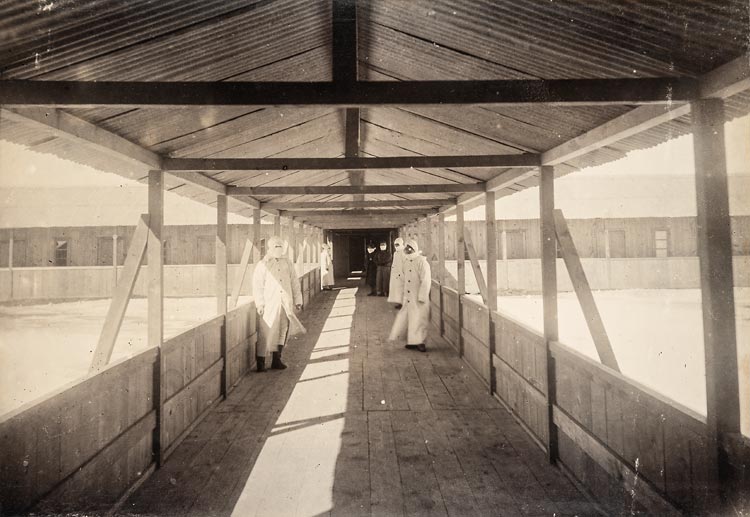
An epidemic of the disease broke out in western Yunnan in the mid-19th century, and by 1894 it had reached the port cities of Canton and Hong Kong. It was in this atmosphere of crisis that Alexandre Yersin, a Swiss who had studied with Dr Roux at the Institut Pasteur, and had been living in Yunnan and Annam since 1890, dissected the corpses of plague victims, thinking that the pathogen might be found in their lymph nodes. Roux confirmed Yersin’s hunch, and the discovery of the Yersinia pestis bacillus foreshadowed the discovery of a cure for the disease.

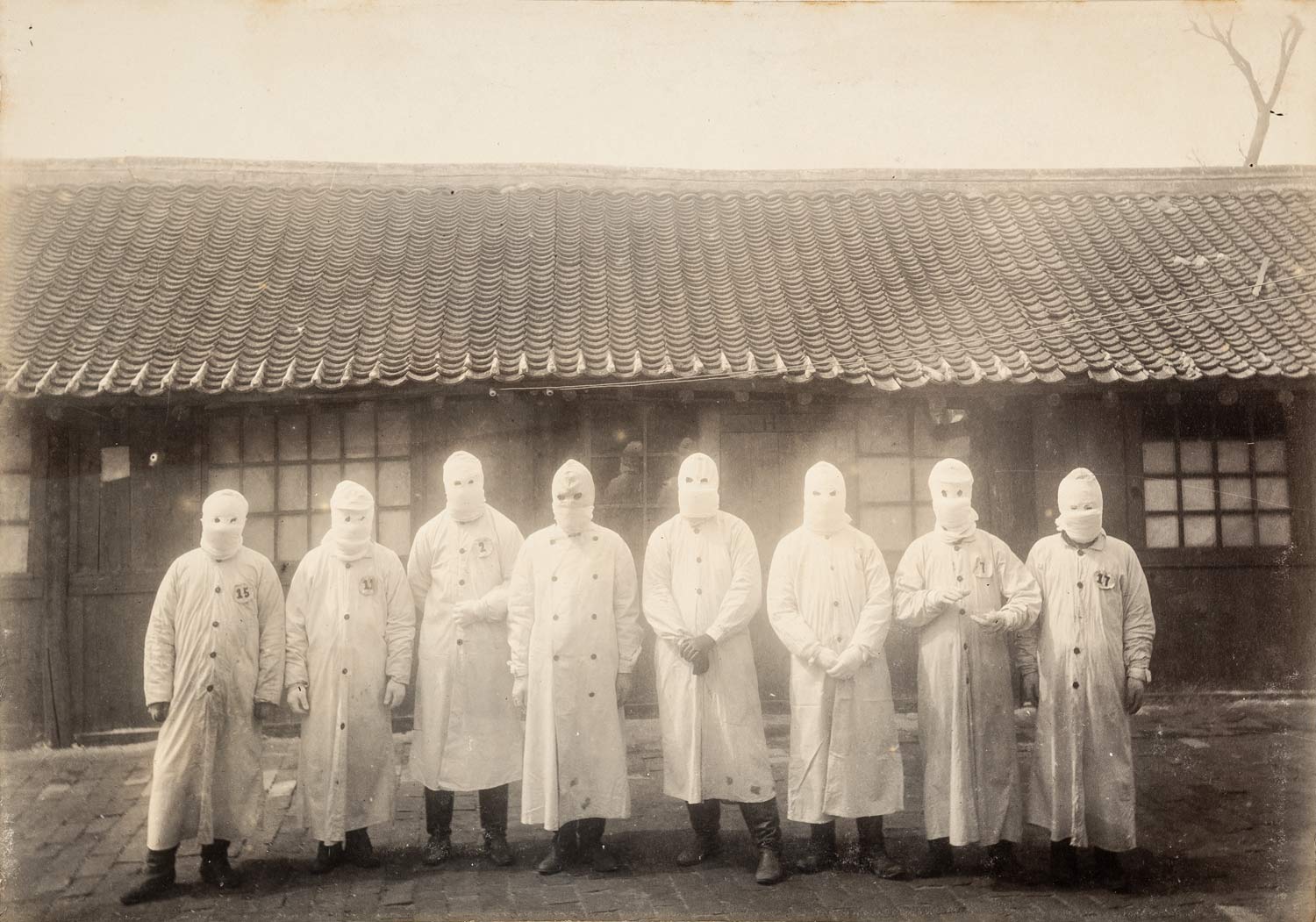
During the epidemic that took place during the winter of 1910-1911, some 60,000 people were struck down by a pulmonary form of the disease that invariably proved fatal. At its height, in January and February 1911, there was a partial breakdown of social order. Chinese medicine could provide no cure for the plague, and burgeoning discontent weakened social ties in a region where subsistence itself was problematic. Communities became unstable on account of the continuing confrontation between the different powers that had designs on Manchuria’s strategic and commercial potential. The local people were no strangers to diversity, but the savagery of the epidemic was a shared evil whose consequences were immense: headlong flight, quarantine, isolation, physical debilitation and death. And the survivors were chronically traumatised.
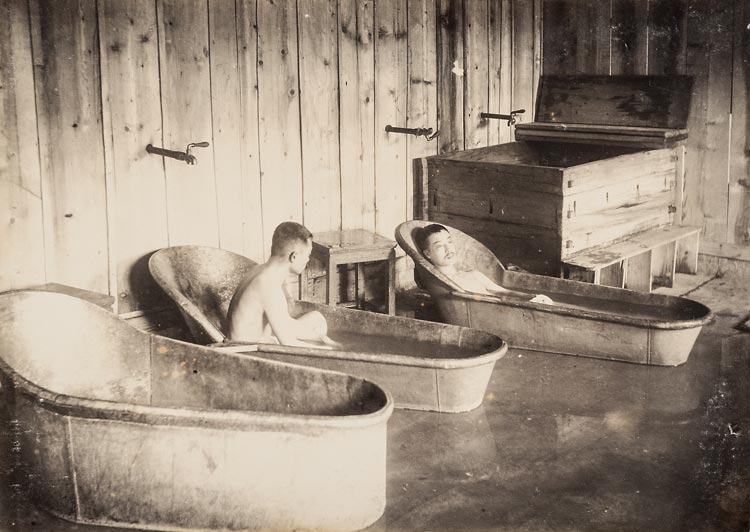
We cannot hope to reconstitute these people’s experience, or the psychological effects they suffered, but we would note that the measures adopted by the authorities – and, in particular, displacement and confinement, which gave access to the population and made surveillance possible – were unpopular, in that they prefigured a regime of constraint. Still, the immediate concern was simply to survive.
For the population, the death rate was as big a problem as the Chinese imperial system. Faced with an accelerating spiral of problems, the authorities asked the eleven nations represented in Beijing to send doctors. Which was how several officers from the medical corps of the Marine de Brest arrived in Mukden, including Charles Broquet, the French delegate at the Conférence Internationale de la Peste, whose notebooks and photographs have survived2See the exhibition Charles Broquet, médecin de la Marine en Chine, Médiathèque François-Mitterrand – Ateliers des Capucins, Brest, August 2020. In April 1911, Broquet wrote Conférence de la peste à Moukden, printed in pamphlet form by Imprimerie A. Coueslant, 1914., and whose colleague Gérald Mesny died of the disease in Harbin on 12 January 1911. The writer and archaeologist Victor Segalen, a navy doctor, volunteered for service in Shanhaiguan, close to the Yellow Sea between China and the Korean peninsula, where he took part in the organisation of a quarantine. The epidemic was a test of sovereignty: China saw it as a threat, but it also alarmed the European powers who had colonised large parts of Asia, where they carried out research and experimentation on infectious diseases, at a time of progress for scientific bacteriology in the West.
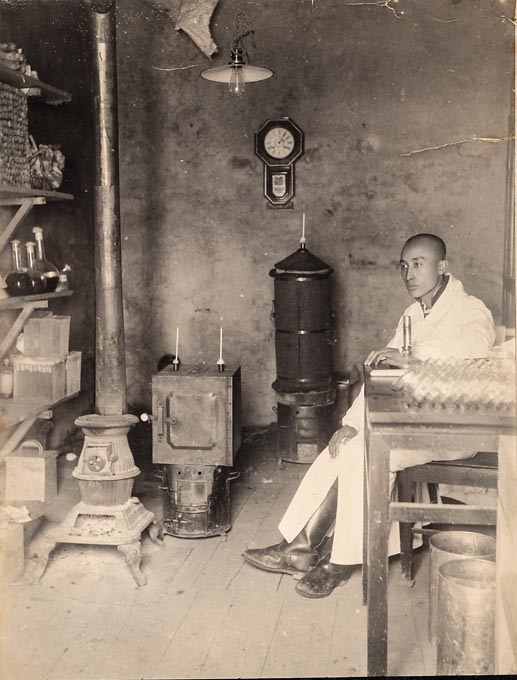
This was a period when the outside world was being attracted by the exoticism of the remote North-East; but with the arrival of the plague it was necessary to isolate the local population and prevent them from leaving the area. And even after the grim memory of darkened bodies had faded, the extent of the contagion remained clear. There was a feeling that death was everywhere, and that the whole of humanity might be affected. The ever-present dread of mortality loomed larger than the outcome itself.
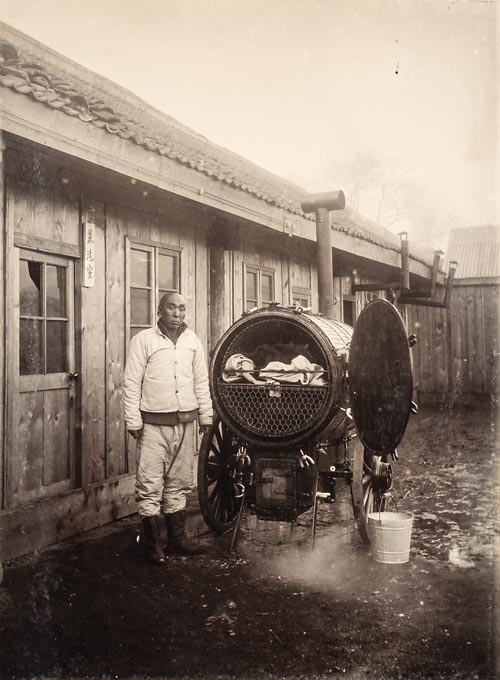
This photographic archive, produced by the Chinese administration, depicts the medical resources that were brought to bear on the plague, but also the political problems of the contested region. An epidemiological hospital was built in Mukden, with the deployment of medical personnel and military cohorts. The photographs show intense activity, and buildings equipped for decontamination work done by staff in long white hooded gowns, using vaporisers. Tests were carried out in a makeshift laboratory, and patients were auscultated by doctors whose heads were wrapped in bandages. Unreactive, unresponsive bodies covered by sheets were stretched out on high wooden tables or camp beds for autopsies to be performed. What is striking is the contrast between the image of the doctor-pacifier, a symbol of rationality in action, and that of humanity in ruins. A doctor, impassive in protective clothing, observes the febrility and precariousness of naked corpses. And the highly protected bodies of the medical personnel seem to mirror the annihilation of the victims. Something incommensurable separates communities from individuals crowded into barracks or wagons, isolated from the medical personnel. A line has been drawn between the ineluctable destiny of the bodies and the form of rationality represented by the doctors. The scene, as this photographic document shows, has been staged both by and for the authorities.
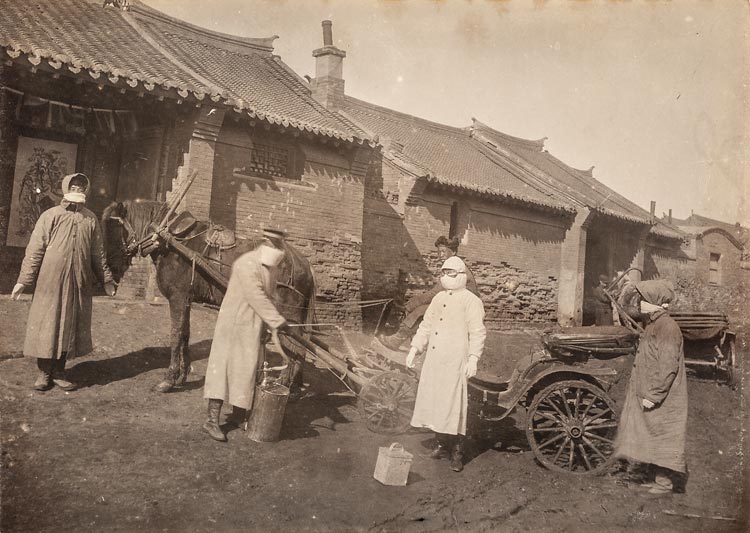
The victims, with their survival instinct abruptly cut short, have turned into shadows. The unrest among the contaminated due to their corporeal affliction and anxiety gives the pictures a spectral quality. Some of the images reflect the concision of the medical act, and show powerlessness to be the tone of this tragic time. It can be seen that there are conditions in which life is no longer possible.
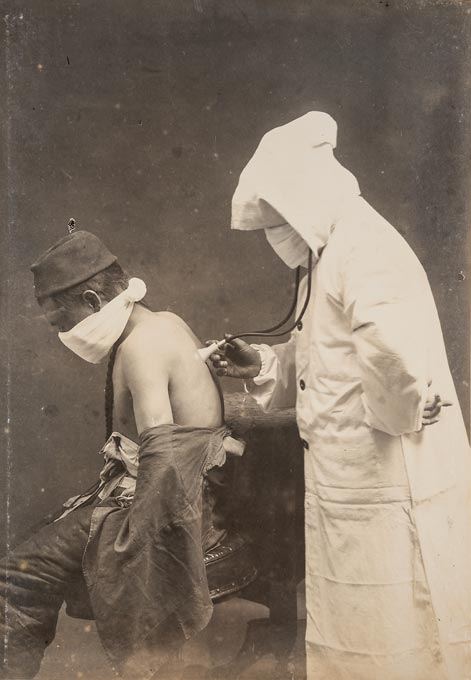

Plague is a breach in the order of nature: a death machine. There is no choice, no injustice. This photographic archive includes harrowing images of autopsies, with piles of blackened bodies, stiffened by the cold, laid on the frozen ground; the morbid flux of their collection and transportation to the incineration trenches, hastily dug by the soldiery; charred personal belongings; a brutal mix of debris and corpses deposited in a succession of cemeteries; undifferentiated heaps doused with petrol; the final prophylactic blaze that prevents putrefaction and propagation.3There is also a collection of photographs in the Henri Mollaret archives at the Institut Pasteur in Paris.

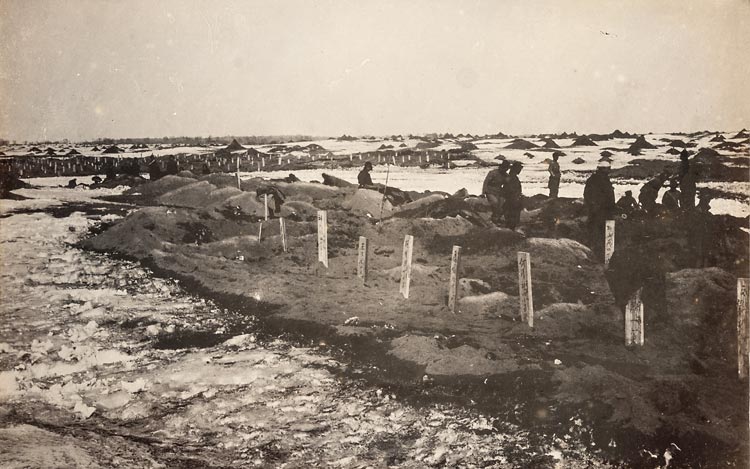
This rare, fascinating view of the Manchurian epidemic, which threatened the Asian region as a whole, also shows how photography was used for recording and propaganda purposes at the start of the 20th century.
For further information about the collection, please contact Bruno Tartarin.

